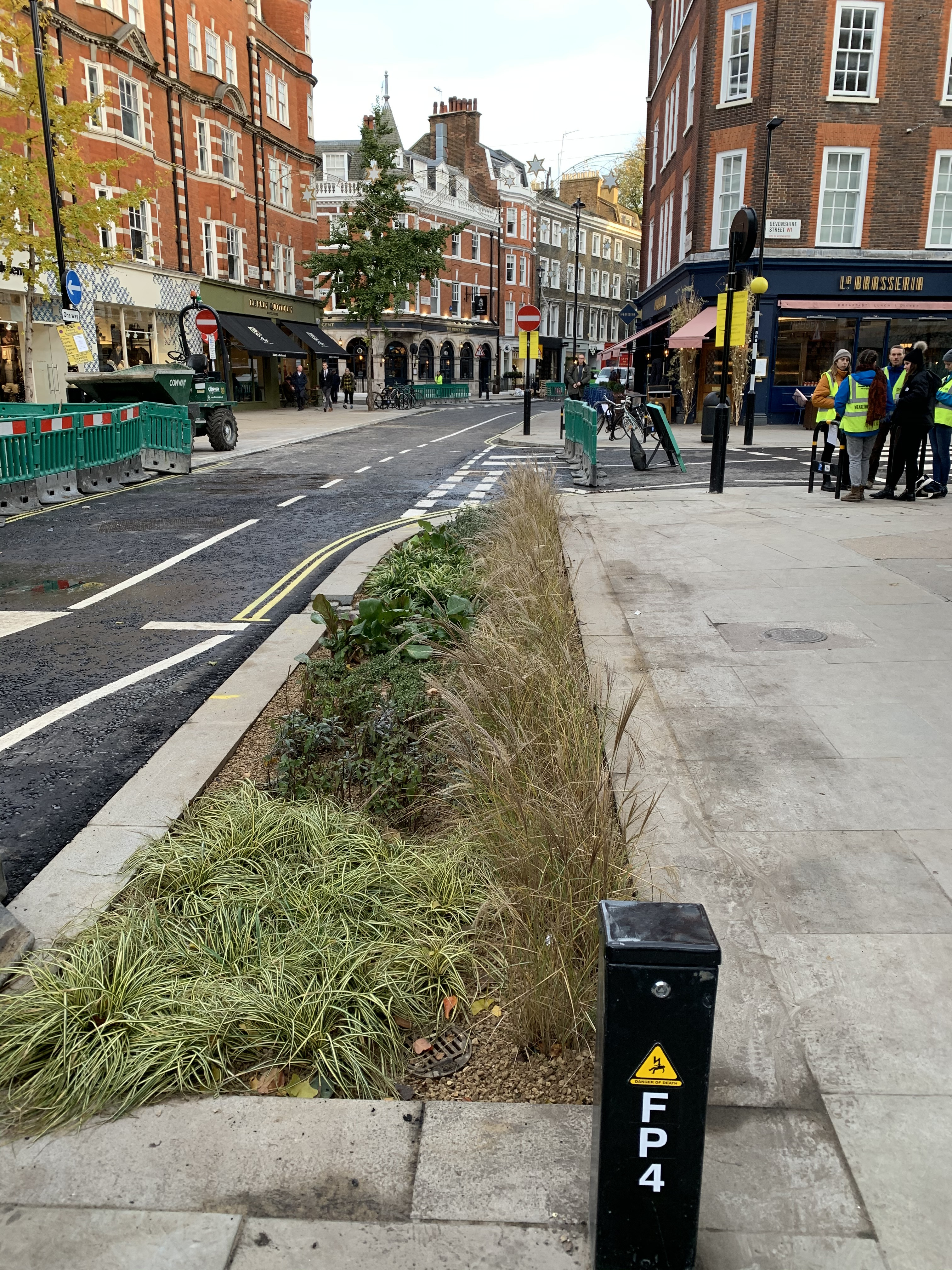Marylebone SUDS Scheme
Description of Works
FM Conway has worked with Westminster City Council and WSP to implement a ‘rain gardens’ SUDS scheme into Marylebone as part of the area’s wider plan to become a low emission neighbourhood.
Working as the Principal Contractor, the aim was to install rain gardens that feature a variety of trees, grasses and greenery to improve the biodiversity to the area and generally enhance the aesthetic of Westminster’s public realm, as well as improving the attenuation of rainfall events and the surface water quality.

